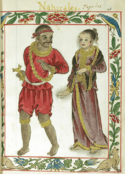Pulilu facts for kids
| Pre-colonial history of the Philippines |
| Barangay government |
| Ruling class (Maginoo, Tumao): Apo, Datu, Lakan, Panglima, Rajah, Sultan, Thimuay |
| Middle class: Timawa, Maharlika |
| Serfs, commoners and slaves (Alipin): Aliping namamahay, Alipin sa gigilid, Bulisik, Bulislis, Horohan, Uripon |
| States in Luzon |
| Caboloan |
| Cainta |
| Ibalon |
| Ma-i |
| Rajahnate of Maynila |
| Namayan |
| Tondo |
| States in the Visayas |
| Kedatuan of Madja-as |
| Kedatuan of Dapitan |
| Rajahnate of Cebu |
| States in Mindanao |
| Rajahnate of Butuan |
| Rajahnate of Sanmalan |
| Sultanate of Sulu |
| Sultanate of Maguindanao |
| Sultanates of Lanao |
| Key figures |
|
| The book of Maragtas |
| Religion in pre-colonial Philippines |
| History of the Philippines |
| Portal: Philippines |
Pulilu was an ancient community or "polity" located in the area of what is now Polillo, Quezon in the Philippines. We know about Pulilu from an old Chinese book called the Zhufan zhi, written in 1225.
What Was Pulilu Like?
Pulilu was connected to another place called Sandao, which was near the Calamianes islands. Sandao, in turn, was a smaller state that looked up to a larger country called Ma-i, found in Mindoro. This means Pulilu was part of a network of communities in the ancient Philippines.
The Dangerous Seas of Pulilu
The waters around Pulilu were very tricky for ships. They were full of coral reefs that looked like sharp blades or old tree trunks. Sailors had to be very careful and steer their ships quickly to avoid hitting these dangerous corals.
What Did Pulilu Trade?
Pulilu was known for its special corals. They produced rare red coral and blue "langgan" coral, though these were hard to find. The main thing Pulilu traded with other places was these unique and valuable corals. Their customs and trade were quite similar to those of Sandao.
See also

- In Spanish: Pulilu para niños


